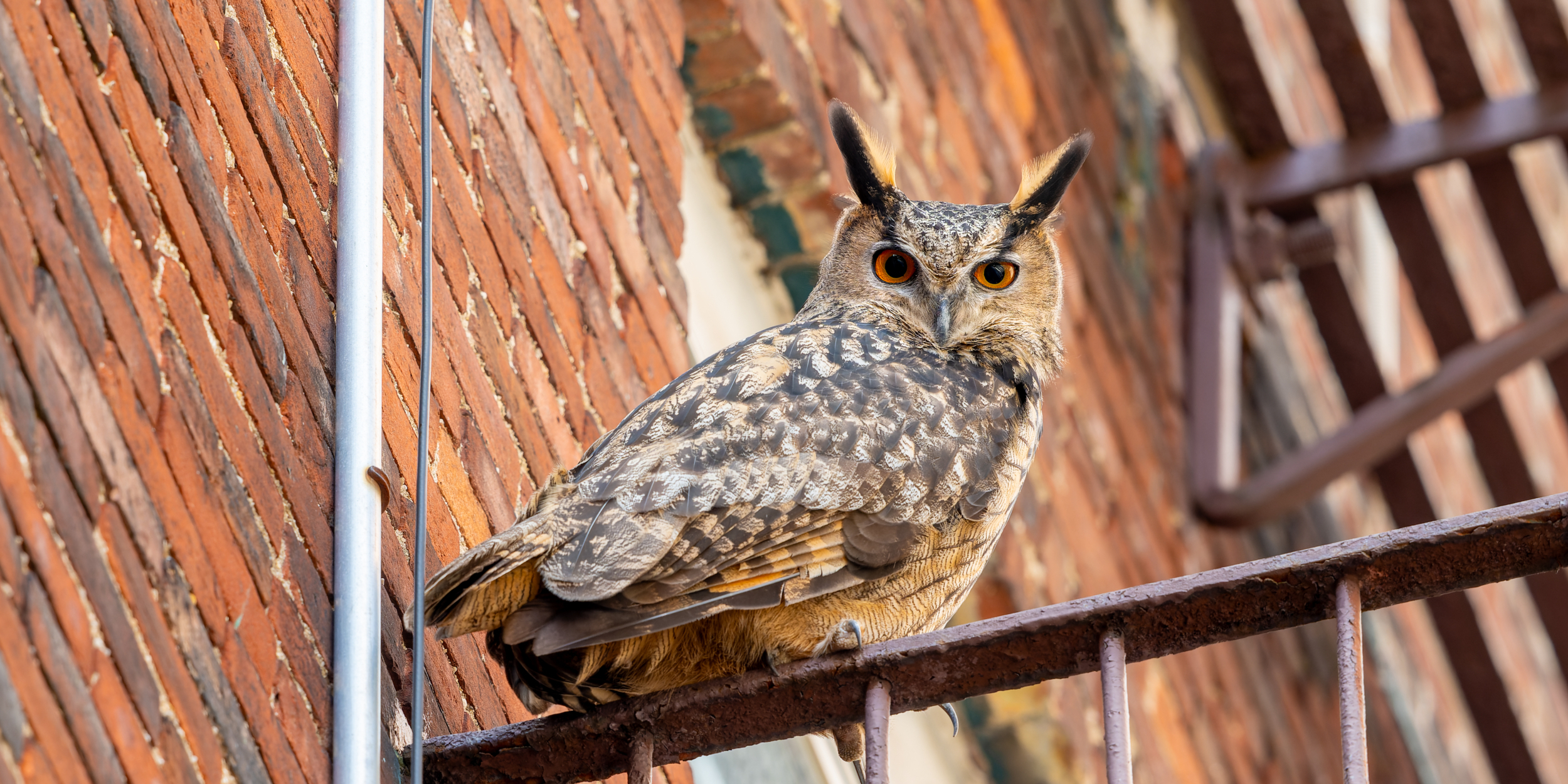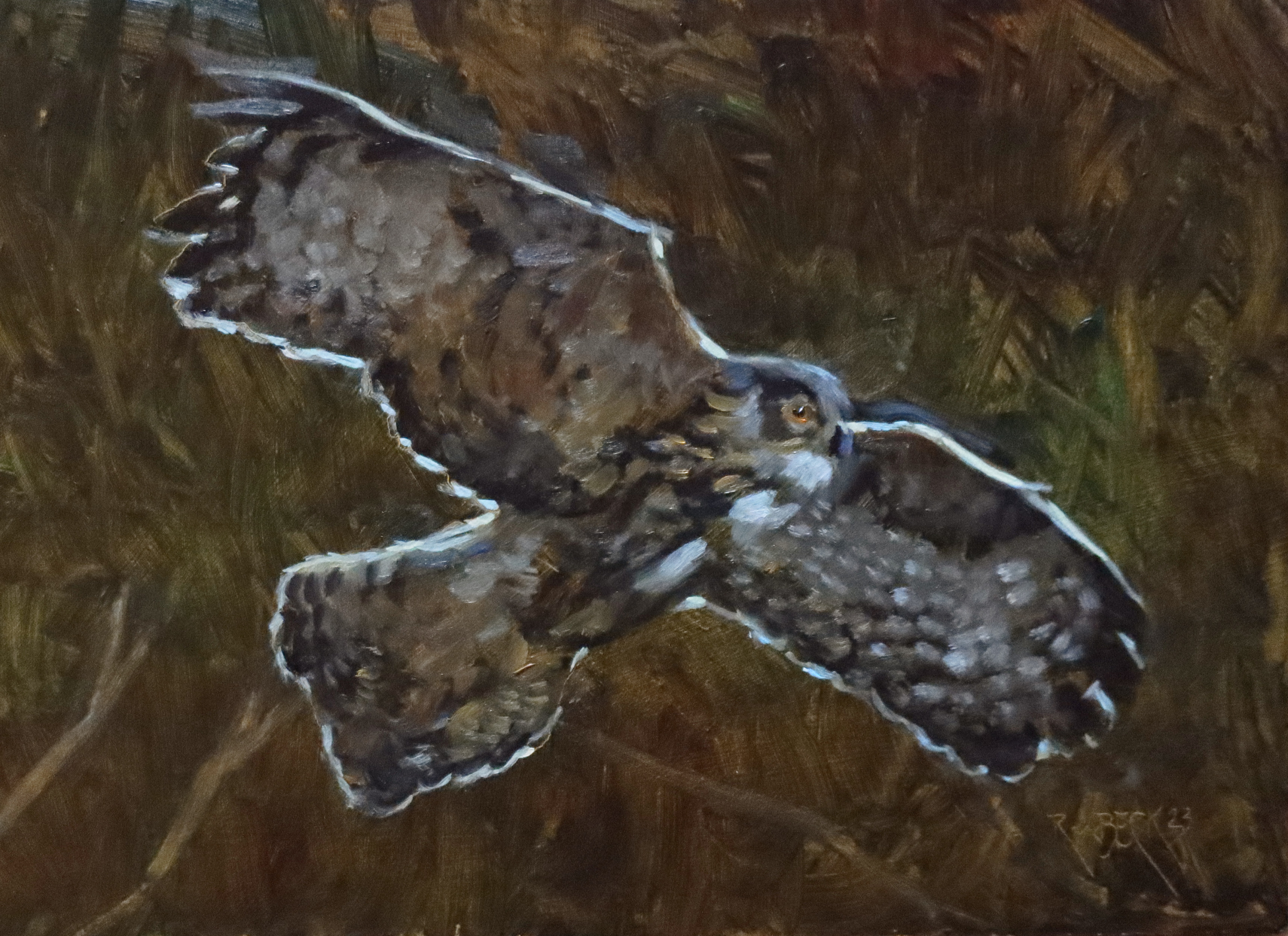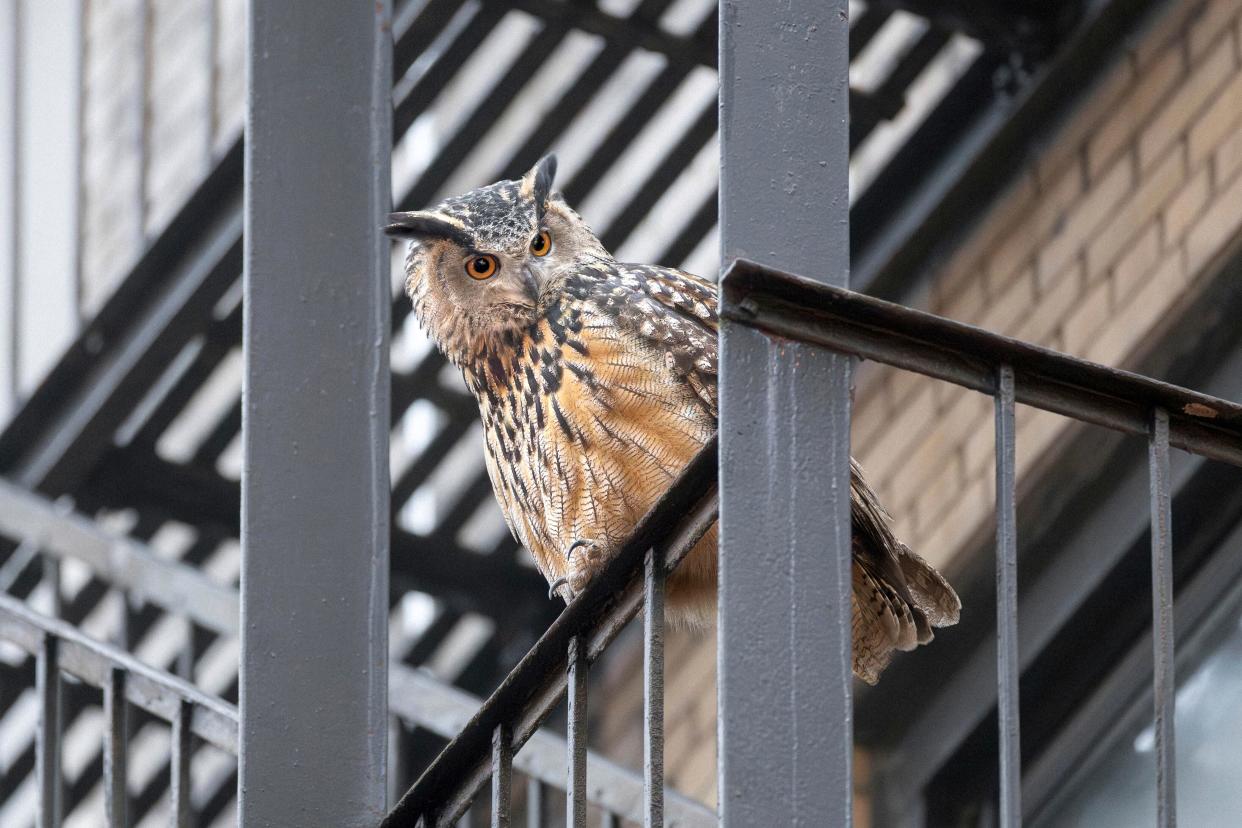Flaco, the beloved Eurasian eagle-owl who escaped from New York City's Central Park Zoo a year ago and became one of the city's most celebrated characters, has died. Flaco was released from his enclosure at the zoo in a criminal act that has yet to be solved. He spent his days lounging in parks and on fire escapes, hooting at night, and eating rats from the city.
Flaco, the Beloved Eurasian Eagle-Owl Who Escaped from Central Park Zoo and Became a Celebrated Character in New York City Dies
Flaco spent his days lounging in parks and on fire escapes, hooting at night, and eating rats from the city
Flaco was an Eurasian eagle-owl who escaped from Central Park Zoo in New York City
He became a celebrated character in the city after his escape





Confidence
80%
Doubts
- It's not clear if Flaco was released intentionally or accidentally
- There may have been other factors that contributed to his death, such as illness or injury
Sources
80%
Flaco, owl that escaped from the Central Park Zoo, dies after colliding with building
Entertainment Variety Tv Site: https://www.yahoo.com/entertainment/tv-site/ Sarah Al-Arshani Saturday, 24 February 2024 22:42Unique Points
- Flaco had been living in the zoo since he was fledgling 13 years ago and couldn't hunt or fly on his own.
- He escaped from the Central Park Zoo almost exactly one year ago; the first anniversary of his freedom was on February 2nd. He attained his release in a fashion befitting New York City: a vandal cut the wire mesh of his cage and he was out.
Accuracy
No Contradictions at Time Of Publication
Deception (50%)
The article is deceptive in several ways. Firstly, it states that Flaco died due to a collision with a building on West 89th Street in Manhattan. However, the article does not provide any evidence or quotes from experts to support this claim. Secondly, the article mentions that Flaco had been living in the zoo since he was fledgling 13 years ago and could not hunt and would starve if released into the wild. This statement is misleading as it implies that Flaco's release from captivity was a negative thing when in fact, it allowed him to live freely for a year before his death. Lastly, the article quotes several people who are mourning Flaco's death and praising his life outside of captivity. These statements create an emotional response in readers without providing any evidence or context about Flaco's actual condition or cause of death.- The article quotes several people who are mourning Flaco's death without providing any evidence or context about his actual condition or cause of death.
- The statement that Flacco could not hunt and would starve if released into the wild is misleading as it implies that his release was negative when in fact, it allowed him to live freely for a year before his death.
- The statement that Flacco died due to a collision with a building on West 89th Street is not supported by any evidence and therefore cannot be considered true.
Fallacies (80%)
The article contains an appeal to authority fallacy by citing the statement of a zoo spokesperson without providing any evidence or context. The author also uses inflammatory rhetoric when describing Flaco's death as 'tragic'. Additionally, there is no mention of any formal logical fallacies in the text.Bias (80%)
The article is biased towards Flaco the owl and its impact on people. The author uses language that deifies Flaco and portrays it as a symbol of freedom, hope, and resilience. They also use quotes from social media users who express their love for Flaco, further emphasizing its importance to them.- Flaco defied the odds and made quite a life for himself in the city over the past year.
Site Conflicts Of Interest (100%)
None Found At Time Of Publication
Author Conflicts Of Interest (100%)
None Found At Time Of Publication
80%
NYC Has Lost a Symbol of Freedom and Resilience; Flaco the Eagle-Owl Has Died
West Side Rag News Site Analysis Report v1.0 (JSON Format) West Side Saturday, 24 February 2024 12:09Unique Points
- Flaco escaped from the Central Park Zoo almost exactly one year ago; the first anniversary of his freedom was on February 2nd. He attained his release in a fashion befitting New York City: a vandal cut the wire mesh of his cage and he was out.
- New Yorkers were rooting for him and ultimately prevailed as he showed authorities that he could survive in this wildest of wilds assuaging their central fear that he would not know how to hunt for food and starve. Instead, Flaco learned the art of hunting on his own.
Accuracy
- Rest in peace Flaco. Thanks for the lift. You will not be soon forgotten.
Deception (50%)
The article is deceptive in several ways. Firstly, the author claims that Flaco was a symbol of freedom and resilience when he escaped from the Central Park Zoo. However, this statement is not supported by any evidence or facts presented in the article. Secondly, the author uses sensationalism to create an emotional response in readers by stating that Flaco's death is a loss for New York City and its residents. This statement is subjective and does not provide any objective reasoning for why Flaco's death should be considered a loss. Thirdly, the article quotes sources such as The New York Times without providing any context or analysis of their reliability or bias. Finally, the author uses selective reporting by focusing on Flaco's escapes from captivity and his time in Central Park while ignoring other aspects of his life and behavior.- The article claims that Flaco was a symbol of freedom and resilience when he escaped from the Central Park Zoo. However, this statement is not supported by any evidence or facts presented in the article.
Fallacies (85%)
The article contains an appeal to authority fallacy by stating that Flaco was a symbol of freedom and resilience without providing any evidence or context for this claim. Additionally, the author uses inflammatory rhetoric when describing Flaco's escape from captivity as a triumph over authorities and his desire for individual pluck.- Flaco was a symbol of freedom and resilience
- The city was mesmerized by Flaco's release
- Zoo workers tried to lure and recapture the eagle-owl, but he eluded them
Bias (85%)
The article is biased towards Flaco the Eagle-Owl and portrays him as a symbol of freedom and resilience. The author uses language that deifies Flaco such as 'a call for natural justice' and 'Flaco prevailed'. They also use quotes from Robert Beck, who wrote an essay about how Flacco's break for freedom initiated a suspension of everyday newyorkerness. This is not objective reporting but rather an opinion piece.- Robert Beck wrote in an essay about how Flacco's break for freedom initiated a suspension of everyday newyorkerness
- The author uses the phrase 'a call for natural justice'
- The author writes that Flaco prevailed
Site Conflicts Of Interest (100%)
None Found At Time Of Publication
Author Conflicts Of Interest (100%)
None Found At Time Of Publication
82%
Celebrity owl Flaco dies a year after becoming beloved by New York City for zoo escape
The Associated Press News Saturday, 24 February 2024 05:02Unique Points
- Flaco was released from his enclosure at the Central Park Zoo in a criminal act that has yet to be solved.
- He spent his days lounging in parks and on fire escapes, hooting at night, and eating rats from the city.
Accuracy
- Flaco appears to have collided with an Upper West Side building.
- He spent his nights hooting atop water towers and preying on the city's abundant rats.
Deception (50%)
The article is deceptive in several ways. Firstly, the author claims that Flaco was one of New York City's most beloved celebrities after escaping from the Central Park Zoo and flying around Manhattan. However, there is no evidence to support this claim as it relies solely on anecdotal accounts and personal opinions.- The article states that staff from the Wild Bird Fund responded to the scene of Flaco's death shortly after he collided with a building. This implies that they were present at the time of his collision, but there is no mention in the article about how long it took for them to arrive or if they had any role in Flaco's death.
- The article claims that Flaco was one of New York City's most beloved celebrities after escaping from the Central Park Zoo and flying around Manhattan. However, there is no evidence to support this claim as it relies solely on anecdotal accounts and personal opinions.
Fallacies (80%)
The article contains an appeal to authority fallacy by stating that the vandal who damaged Flaco's exhibit is ultimately responsible for his death. The statement also implies that the NYPD will make an arrest, but there is no evidence of this yet.- ](https://apnews.com/article/flaco-owl-dies-central-park-zoo-escape) Flaco appears to have collided with an Upper West Side building.
Bias (100%)
None Found At Time Of Publication
Site Conflicts Of Interest (100%)
None Found At Time Of Publication
Author Conflicts Of Interest (0%)
None Found At Time Of Publication